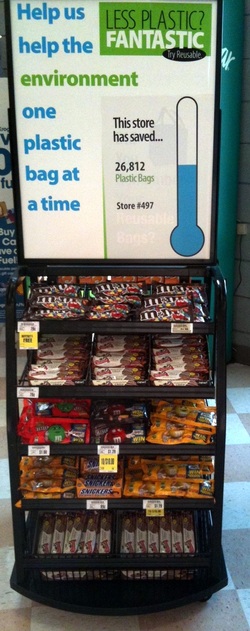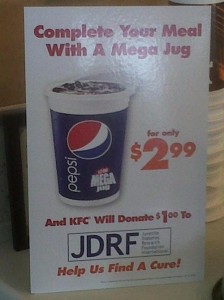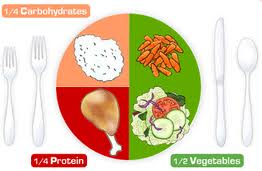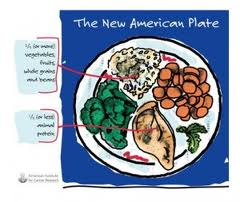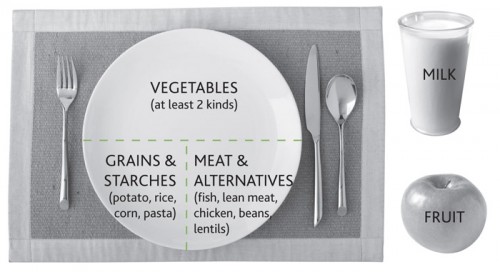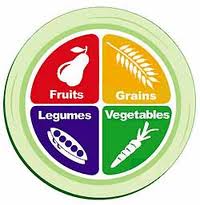Weight loss key to fighting type 2 diabetes
So many comments came in to my blog post on Paula Deen’s diabetes announcement, “weighing in on Paula Deen,” that I thought it was worth revisiting in my monthly (first Sunday) column in the San Francisco Chronicle. The question (edited) came from a blog reader:
Q: I have been diagnosed with type 2 diabetes and am very confused about insulin resistance, and what carbohydrates I can and cannot eat. So much of what I read is contradictory.
A: The first line of defense against type 2 diabetes is weight loss, but you would never know it from listening to Paula Deen, the celebrity Southern cook who recently announced that she has this disease, or even to the American Diabetes Association.
Having diabetes is no joke. It is a leading cause of blindness, kidney failure, leg and foot amputations, and premature death.
The disease comes in two forms – type 1 and type 2 – but type 2 accounts for 95 percent of cases. In both, levels of blood sugar are too high as a result of problems with insulin, a hormone that enables the body to use blood sugar for energy. But the reasons differ.
Type 1 is an autoimmune disease. It causes the pancreas to stop making insulin or not make enough. Type 1 is not yet preventable and requires insulin treatment.
In type 2, insulin may be available, but body tissues resist its use.
Being overweight is the key factor in type 2. Most people can prevent it by not gaining weight. And most people with the type 2 disease can eliminate symptoms by losing some weight.
Genetics is certainly a factor – many overweight people never develop the disease – but 85 percent or more of people diagnosed with type 2 diabetes are overweight or obese.
In genetically predisposed people, being overweight causes insulin resistance. Metabolism does not handle excess calories very well, and this means calories from any source, not just carbohydrates.
Fast food, soft drinks
Children and adults who habitually consume fast food as well as soft drinks tend to take in more calories and weigh more and are more likely to develop symptoms than people who eat healthier diets and are more active.
This makes healthy eating and physical activity the most important approaches. The vast majority of overweight people at risk of type 2 diabetes can prevent symptoms by losing a few percent of their body weight and doing a couple of hours a week of moderate – not necessarily vigorous – physical activity. The same works for treatment. Some people will still need medications, but the drugs work better with diet and physical activity.
As the Centers for Disease Control puts it, “all diabetes-care programs should make healthy weight a priority.”
Dietary advice for type 2 diabetes is the same as advice for everyone else: Eat a wide variety of relatively unprocessed foods, especially vegetables, fruits and whole grains, and don’t consume too much junk food or too many sugary beverages.
Scientists may argue endlessly about the relative importance of calories, sugars and refined carbohydrates in the diets of people with type 2 diabetes, but everyone agrees that eating less of all three would help resolve symptoms.
Why isn’t weight loss better recognized as a treatment strategy? Paula Deen’s announcement said nothing about losing weight.
The ADA does talk about weight loss on its website ( www.diabetes.org), but you must search hard through several complicated screens before you find, “Losing just a few pounds through exercise and eating well can help with your diabetes control and can reduce your risk for other health problems.”
Pharmaceuticals
I can’t help wondering if the lack of prominence given to weight loss might have something to do with the influence of pharmaceutical companies.
A few years ago, I gave a talk on the importance of weight loss in control of type 2 diabetes at an ADA annual meeting. Although many conference talks dealt with drug treatment, mine was the only one on diet – except for a session on sugars sponsored by Coca-Cola.
The exhibit hall was packed with drug company representatives dispensing free pens, writing pads, books, lab coats and stethoscopes – all with corporate logos.
The influence of drug companies on diabetes advice is worth attention. Deen represents a drug that costs hundreds of dollars a month. Drug companies give the ADA millions every year.
Eating less and being active make no money for anyone (unless people can be induced to join commercial weight-loss programs).
Losing weight is a losing battle for many people. It’s hard to lose weight in today’s “eat more” food marketing environment.
Teachable moment
But a diagnosis of type 2 diabetes should be a teachable moment. Shouldn’t the ADA more strongly urge people with the disease to eat less, eat better and move more, and help everyone find ways to cope with “eat more” messages?
The health and economic costs of type 2 diabetes, and its preventability, are reason enough to demand changes in the food environment. The ADA should be working hard to make it easier for everyone to eat more healthfully, be more active and avoid the need for a lifetime of diabetes medications.
Marion Nestle is the author of “Food Politics” and “What to Eat,” among other books, and is a professor in the nutrition, food studies and public health department at New York University. She blogs at www.foodpolitics.com. E-mail comments to food@sfchronicle.com.
This article appeared on page G – 4 of the San Francisco Chronicle

